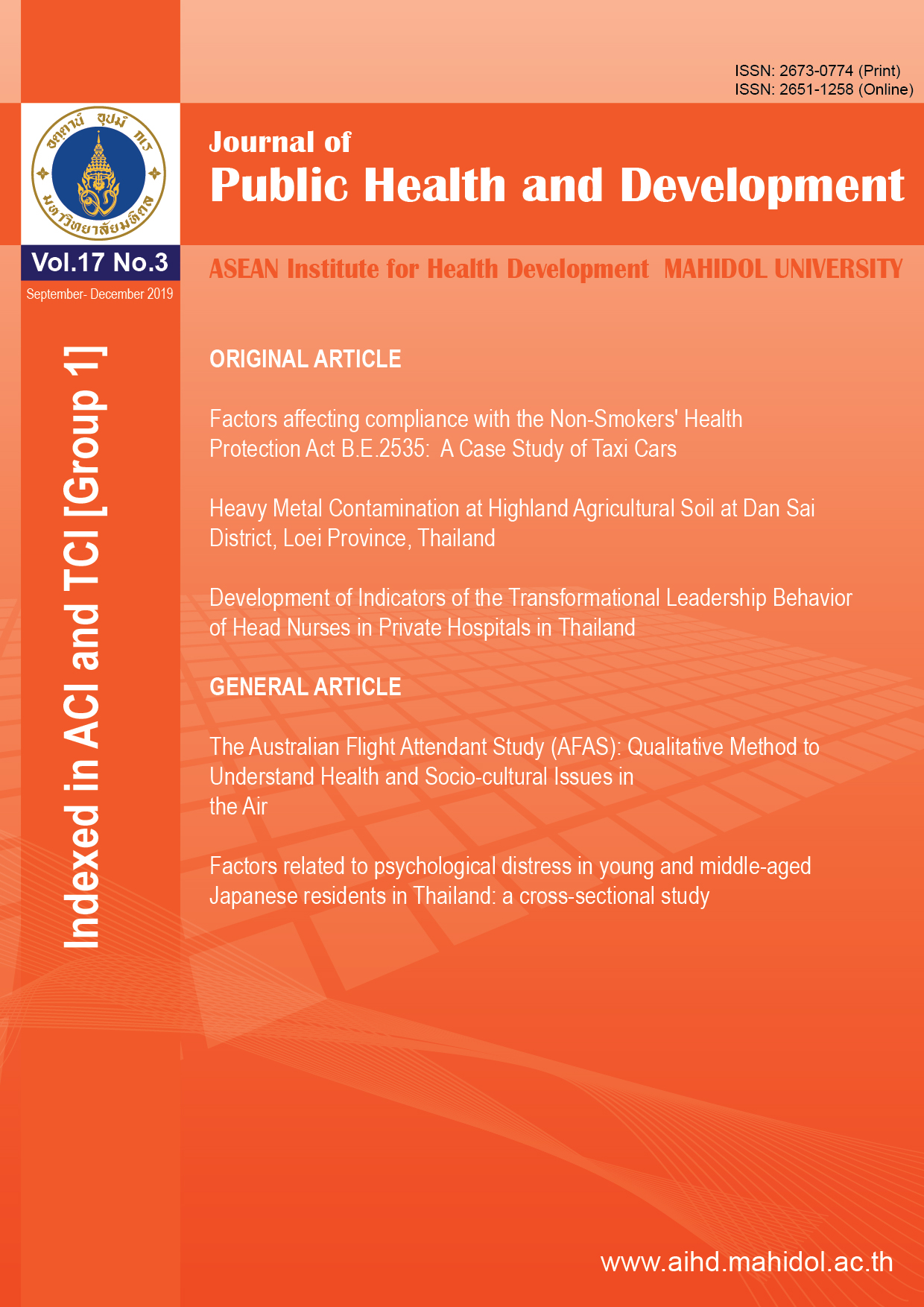The Australian flight attendant study (AFAS): qualitative method to understand health and socio-cultural issues in the air
Main Article Content
Abstract
Nowadays, international flight has been made more accessible through the availability of cheaper services offered by budget airlines. However, one important aspect of the provision of airline services is an intricate understanding of the role of the flight attendant and their health. While the literature has examined perspectives of those working abroad, minimal attention has been paid to the Australasian perspective. Qualitative research, primarily interviews, can yield a wealth of information that can be used to further understand factors affecting flight attendants’ health during the course of their occupation.
A novel interview protocol was developed, against the backdrop of current literature that attempts to understand the perspective of flight attendants and their imperative roles in flying. The research instrument consists of two main parts: a) a demographic survey, and b) an in-depth semi-structured interview. Furthermore, suggestions for sampling of participants, stratification of interviewees and research questions are proposed. A major unique defining characteristic of this protocol is the stratification of FAs based on the degree of “regionality” of their flight paths taken during their daily work. Upon thematic analysis of interview data, regionality may then be used to stratify themes based on the flight paths of the flight attendants interviewed. This will allow novel comparisons to be made that can be used to highlight issues that may occur during flight, as mentioned by FAs; and for conclusions to be drawn in the impacts of flight time on a range of issues such as self-health, rostering, sleep and jet-lag.
The proposed demographic survey can be used to capture participant details of the study. The research questions proposed can be interrogated through evolvement of a semi-structured interview set to stem from these questions. Furthermore, the novel sampling strategy will lead to unique perspectives being derived from data through comparison across groups. It will help elucidate important perspectives regarding issues such as jetlag, self-health and sleep.
The work described has put forward a novel methodology to understand the perspectives of FAs regarding their health. It is posited that these perspectives may enhance those already in the literature, and set new frontiers for understanding psychosocial aspects surrounding flying, that may have an impact on staff health.
Article Details

This work is licensed under a Creative Commons Attribution-NonCommercial-NoDerivatives 4.0 International License.
References
Murphy AG. The flight attendant dilemma: an analysis of communication and sensemaking during in-flight emergencies. Journal of Applied Communication Research. 2001;29(1),30-53.
Bergman A, Gillberg G. The cabin crew blues – middle-aged cabin attendants and their working conditions. Nordic Journal of Working Life Studies. 2015;5(4),23-39.
Fox JW. Flight attendant sensemaking during in-flight emergencies. Northern Kentucky University, United States of America; 2008.
Pollard CH. Impact: A study of flight attendant survivors of air disasters. California Institute of Integral Studies, United States of America; 2001.
Williams C. Sky service: The demands of emotional labour in the airline industry. Gender, Work and Organization. 2003;10(5):513-550.
Horton G, Diaz N, Mcilveen J, et al. Mental health and substance use characteristics of flight attendants enrolled in an in-patient substance abuse treatment program. International Journal of Mental Health and Addiction. 2011;9:140-150.
Evans L. Facing racism at 30,000 feet: African American pilots, flight attendants, and emotional labor. Texas A&M University, United States of America; 2012.
Scott ED. Plane truth: A qualitative study of employee dishonesty in the airline industry. Journal of Business Ethics. 2003;42:321-337.
Walter DL. The relationship of quality of work-life and organizational commitment: a correlational study of flight attendants in the United States. Grand Canyon University, United States of America; 2017.
Nyberg M, Wiklund ML. Impossible meals? The food and meal situation of flight attendants in Scandinavia – A qualitative interview study. Appetite. 2017;113: 162-171.
McMullin D, Angerer J, Green R, et al. Qualitative and Quantitative Study of Older German and US Flight Attendants---the BEST AGE study. Proceedings of the Human Factors and Ergonomics Society Annual Meeting. 2014;58(1),140-144. Los Angeles, United States of America: SAGE Publications.
Cahill J, McDonald N, Losa G. Understanding and improving flight crew performance of the preflight, flight planning, and briefing task. The International Journal of Aviation Psychology. 2013;23(1):27-48.
Choyce A. A qualitative study on understanding employee engagement in the airline industry. Colorado Technical University, United States of America; 2015.
Airport Cooperative Research Program. Technical Appendix 4: Qualitative Research – ACRP 03-28: The Role of U.S. Airports in the National Economy. Boston, United States of America: Economic Development Research Group, Inc.; 2015.
Tedesco Triccas L, Donovan-Hall M, Burridge J, et al. (2016). Cognitive interviewing techniques used in developing questionnaires on functional electrical stimulation in spinal cord injury. International Journal of Therapy and Rehabilitation. 2016;23(3):114-121.
Cafferty C. Is the sky the limit for carbon offsetting? Corporate responsibility, consumer sovereignty and commitment in the airline industry. University of London, United Kingdom; 2011.


